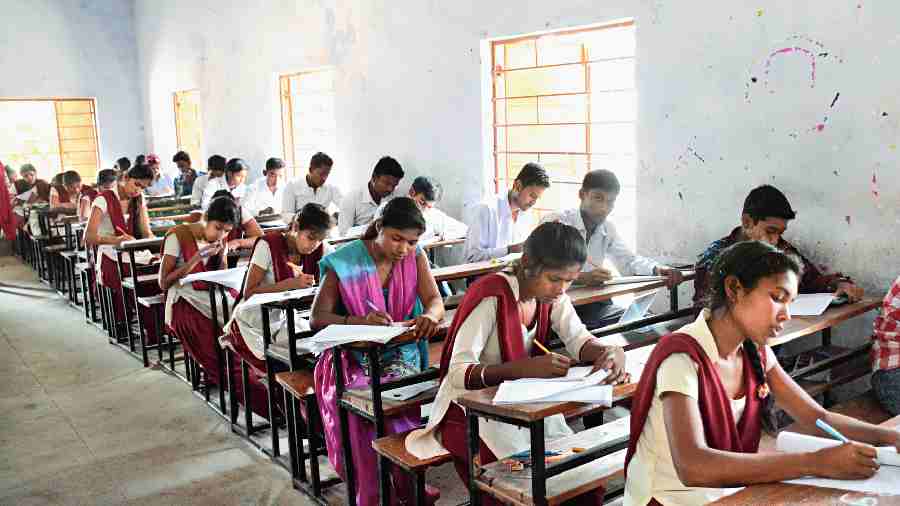Jharkhand, which is one of the worst performing states in terms of retention of school students, has launched a first-of-its-kind model aimed at improving school retention and increasing school return of dropout students.
Jharkhand Education Project Council (JEPC), a unit of the state education and literacy department, on Tuesday inked an agreement with Delhi-based not-for-profit organisation Healthy Aging India in Ranchi to implement inter-generational learning for the welfare of vulnerable schoolchildren of Standard VI to VIII to improve school retention and to increase school return of dropout students.
“In this model the retired educated elderly will teach the school children of Standard VI to VIII from the nearest community across Jharkhand state,” confirmed JEPC project director Kiran Kumari Pasi.
“Inter-generational learning is a complementary educational delivery model, designed and validated by Dr Prasun Chatterjee, a professor of geriatric medicine at AIIMS-New Delhi, to improve emotional intelligence of schoolchildren, imbibe purpose and social skills in these children along with improving cognitive agility in the elderly to prevent dementia and various other mental health issues of ever-growing elderly people,” informed JEPC state programme officer Abhinav Kumar.
“The Jharkhand government is keen to improve the overall educational status and academic performance of schoolchildren specially for the secondary schoolchildren. Jharkhand is the first state to implement this win-win model in India after successful pilots in Noida and Ranchi district,” said Kumar.
As per the understanding done for the period of five years, the Delhi-based organisation will select educated elderly residents and map them with 500 government schools across the 24 districts.
“In the first phase they will be rolling out the model in 100 schools and gradually increasing it to 500 schools. As it is beneficial both for the elderly and the students, we will not be paying the elderly residents. However, the organisation has assured to arrange transportation for such senior citizens,” said Kumar.
He added that the AIIMS professor has found that post retirement senior residents have the tendency to develop dementia if they sit idle.
“This model will keep such senior citizens engaged while also benefiting the students. They will be giving service at school for only two hours and would be free to tell stories and anecdotes to students to make them understand the importance of studies and handle crisis situations in life,” said Kumar.
As per the United District Information System for Education (UDISE) data of 2017-18, Jharkhand with its high tribal population had the highest dropout rate for schoolchildren in India with only 30 out of 100 students finishing school.
Jharkhand, along with Arunachal Pradesh, Assam and Bihar, had the worst retention rate (the percentage of students who have continued to enrol in the government school in the subsequent year) among higher secondary students in government school as per the education ministry response during the winter session of the Parliament in 2019.
Jharkhand had a retention rate of 20.19 per cent, slightly better than Bihar with 18.91 per cent and Assam which was at the bottom with 17.24 per cent. The national average for retention rate at the higher secondary level was 40.17 per cent.
Even at the primary level, Jharkhand had a retention rate of 80.53 per cent (as against national average of 86.97 per cent.

